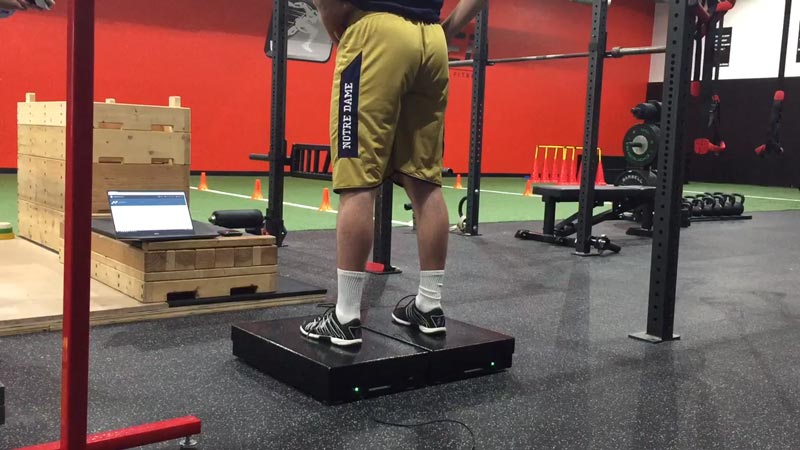Force Plates A Force in Athlete’s Rehabilitation & Training
Force plates are used in testing and training to help people achieve their performance goals while avoiding injury. They use sensors to detect differences in forces exerted onto the ground that therapists may not be able to see with the naked eye.A recent story from LJWorld.com spoke with LHM Health professionals about how force plates help athletes in their rehabilitation process.
 Below is an excerpt from the LJWorld.com story.
Below is an excerpt from the LJWorld.com story.
“Our team can look at a patient’s body weight squat, especially for those who have issues offloading — or not bearing weight — on their extremities,” said Danny Larson, a physical therapist at the LMH Health West Campus. “This technology allows us to get objective feedback to inform our rehabilitation plan. The feedback shows the therapist what a patient needs to work on and how to target their training.”
Benefits For Rehab and Training
Athletes using the VALD force plates at OrthoKansas benefit from understanding how well they’re loading weight on their extremities following an injury or surgery. Larson said the research demonstrates that people unconsciously offload or favor a limb after injury for extended periods of time, even after they feel like recovery is complete.
“The problem with this unconscious offloading is that it has the potential to increase the risk of re-injury, causing you to spend more time off the field or court,” he said. “Knowing how you’re loading your limbs helps to guide your training program so you’re doing the best things possible to get you back on the field and keep you there.”
Patients can also use the plate technology to see a live feed of how they’re loading their extremities. This helps the patient and therapist ensure they’re performing quality reps during training, allowing them to make the most of their time and effort.
It’s not just athletes who benefit from the use of the force plates. Dr. Luis Salazar, a sports medicine physician at OrthoKansas, said that many patients with lower-extremity injuries can benefit from this technology.
“Force plates are a great tool to assess discrepancies between loading, jumping, force development, and symmetry between the left and right sides of the body,” he said. “I’ve referred a number of patients to our sports physical therapy providers and incorporated the technology into their rehab.”
Salazar emphasized that getting feedback from the plates only takes a few minutes and doesn’t increase the length of an individual therapy appointment.
“Patients who use the force plates are able to get immediate feedback, awareness, and understanding about their progress,” he said. “It helps us provide an accurate timeline for their recovery.”
To read the full story from LJWorld.com, click here.







